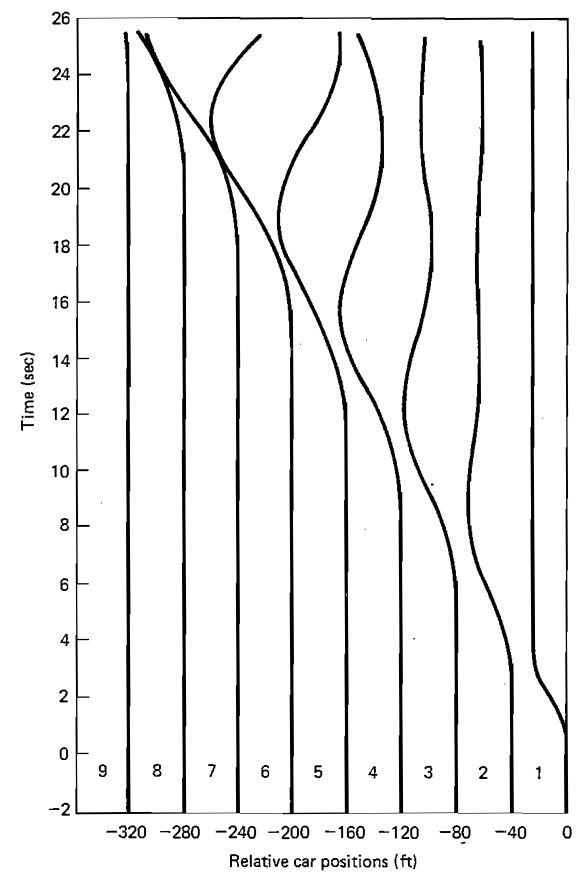Keep a Safe Following Distance
Here’s a public service announcement to keep you safe on the road during the highest flow rate months of summer.
For unimportant reasons1 Some time many years ago I read an argument in favour of maintaining a quite large gap to the vehicle ahead when driving. The author of the argument considered a large gap to be a sort of anti-jam that can consume a traffic jam and dissipate it. The argument made sense to me, but I have never really verified it against theory. To be able to do that, I need to learn traffic engineering. Also I imagine some parts of vehicular traffic flow theory might be useful when designing distributed software systems., I’m reading a book on traffic engineering2 Traffic Flow Fundamentals; May; Pearson; 1990.. In it is an important diagram.

Figure 1: A diagram of asymptotic oscillations in car-following
This diagram should be read from bottom to top, right to left, and illustrates what happens when vehicles, as a rule, follow very closely to each other, and try to compensate by braking more aggressively.
When the lead vehicle decelerates, the first following vehicle does not respond immediately (because human reaction times) but instead continues closing in on the lead for a while. Once the first following vehicle responds, it does so even more aggressively because of how much the vehicles have closed in on each other already.3 The fact that this might result in an overcompensation isn’t obvious to the driver at the time, because it’s a function of information the driver doesn’t yet have.
Then the cycle repeats for the second following vehicle, except thanks to the even more aggressive braking of the first following vehicle, the second vehicle will have even less time to respond, and will brake even harder. As this wave of ever more aggressive braking travels down the line of cars, it sets up an oscillation that grows worse the further back it goes.
Eventually, after almost half a minute, vehicle 6 just barely avoids a collision with vehicle 5 by really slamming the brakes. But, rather unsurprisingly, this results in vehicle 7 – after accounting for reaction times – not being able to brake hard enough and ramming vehicle 6 from behind.4 The devious thing about this effect is that even if the difference in closing rate between successive cars is small, if there are enough cars on the road, eventually, two or more of them will run out of space and collide. This is called asymptotic oscillatory instability.
If we are in vehicle 6, how can we avoid being rammed by vehicle 7 behind us? We have to brake less aggressively. One way to do that would be to react quicker, but I don’t think improving one’s reaction time is a useful endeavour. Another way to make room for less aggressive braking would be to maintain a longer distance to the vehicle ahead. When vehicles follow each other5 Typically defined as less than five seconds between each other., we should, in other words, maintain at least enough of a distance that we can brake softly even when the vehicle ahead slams their brakes.6 Hypothetically, by keeping our attention further ahead on the road we can predict when this situation is going to occur and dynamically increase our distance, and that is a useful defense-in-depth strategy, but it doesn’t negate the primary defense of keeping a safe following distance.
But what really gave me pause was imagining how the situation appears to the first following vehicle: they will only think they avoided a collision with ample margin, and drive ahead merrily, continue to maintain insufficient distance, because they are oblivious to the sequence they just started.
Keep a safe distance – if not for yourself, then for everyone behind you.